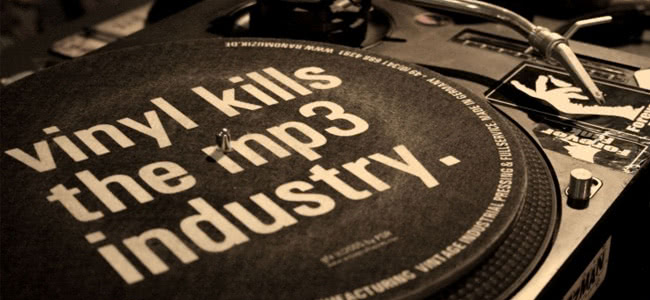Sales of digital music has experienced its biggest drop in a decade. In fact, its the largest dip in sales since iTunes launched back in 2003.
While Apple’s digital music store celebrated its 10th birthday last year, new figures from Billboard reveal that 2013 saw digital tracks sales fall by 5.7%, from 1.34 billion units to 1.26 billion, according to figures from Nielsen SoundScan.
Digital album sales fared better in the same 12 month period, falling to 117.6 million units, a drop of 0.1% from the previous year’s 117.7 million.
The decline can be attributed less to an ongoing threat from music piracy (though illegal downloading is alive and well), but instead the increasing popularity of digital music services such as Rdio, Deezer, and the ever-popular Spotify.
The increasing popularity of subscription based models and the increased variety of platforms available to consumers (such as the relatively new iTunes Radio and expansion of established services) is believed to be offsetting (or rather cannibalising) the drop in digital music sales, and directly attributed to the industry’s first upturn in profits since the launch of Napster in 1999 (including here in Australia).
The digital track sales downturn was to be expected as more consumers switch to free ad-supported models (why spend a dollar or so on a track when you can stream it for free?), but the digital album decline continues the worrying downward trend.
A mid-year 2013 report saw sales of albums in the US plummeting to 4.68 million, before sinking to a historic 20 year all-time low of 4.49 million last November, marking the longest stretch of poorly album sales since SoundScan began measuring sales in May 1991.
Love Music?
Get your daily dose of metal, rock, indie, pop, and everything else in between.
Overall, album sales suffered a 8.4% dip in 2013, to 289.4 million units from nearly 316 million units the previous year. while the current Billboard report also shows that CD sales have dropped by 14.5% to 165.4 million units in 2013.
However, the vinyl resurgence continues to prove its ascending pace, the record revival’s year on year growth continuing in 2013 – rising to 6 million units from the 4.5 million the little format that could managed to tally in 2012, and now accounts for 2% of all album sales in the US, making it a niche growing success.
Along with the vinyl anomaly, a number of individual album titles managed to buck the overall downward trend, with 13 titles reaching multi-million sales versus the 10 that made the same milestone in 2012.
All of those million-raking albums however, were released in previous years (such as Adele’s 21 and Taylor Swift’s Red), with Justin Timberlake’s The 20/20 Experience being the only album released in 2013 that sold more than one million units, with a marketing saturation ensuring that JT’s comeback album eventually shifted 2.4 million units.
The top selling tracks of last year mildly reflected the year’s most streamed songs. Robin Thicke’s ‘Blurred Lines’ scanned nearly 6.5 million in sales, followed by Macklemore & Ryan Lewis’ ‘Thrift Shop’ (at 6.1m units) and Imagine Dragons’ ‘Radioactive’ (with 5.5m units). But the biggest downloaded song of 2013 remained to be Gotye’s Kimbra-featuring single ‘Somebody That I Used To Know’ with 6.8 million units.
Despite digital music sales experiencing their biggest drop since iTunes opened, the digital music store still accounts for more than a third of all paid album downloads in the US, Apple’s online store growing its market share to 40.6% while chain stores the likes of Target, Walmart, and Best Buy all saw sales and market shares decline.

































